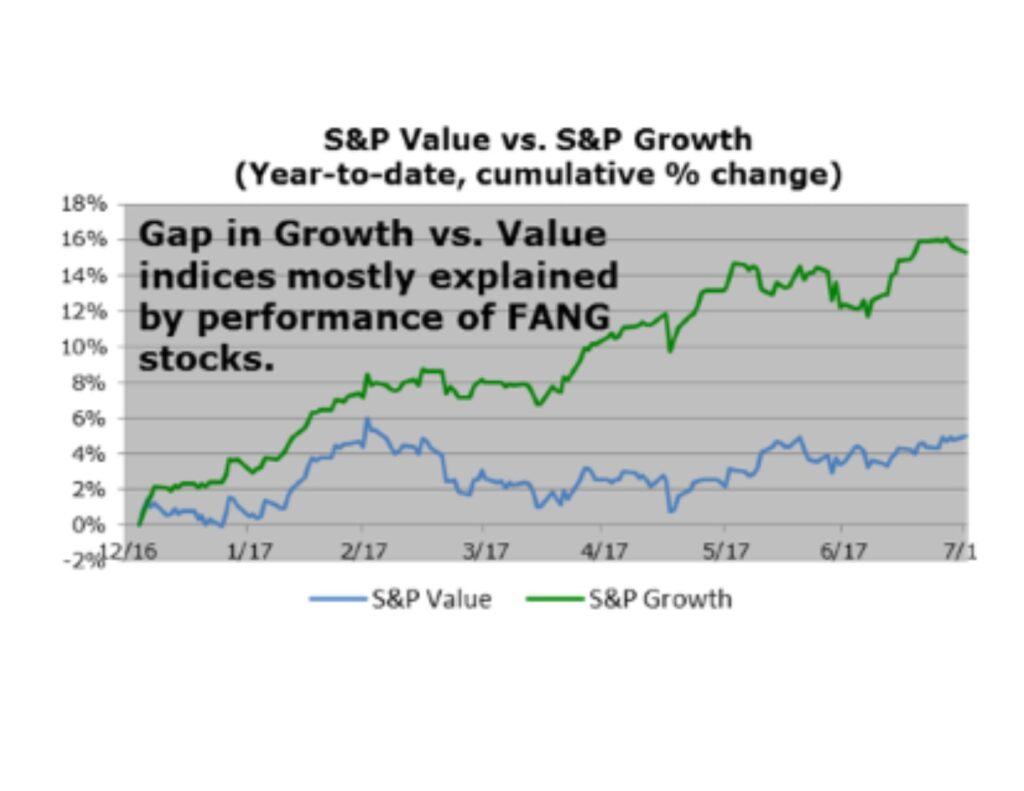
Stocks continued their upward march in July (both the Dow 30 and S&P 500 have recorded over 30 new highs this year). The broader-based S&P 500 has ten industry sectors among 505 component stocks. Would you believe only three of the ten sectors have outperformed the entire index return in 2017? This means the other seven are lagging the other three by a wide margin. Consumer Discretionary, Health Care and Technology are the only sectors that have outperformed the broader S&P 500, and just a handful of stocks in the Technology sector have been driving the Index to record highs.
Facebook, Amazon, Netflix, and Alphabet (formerly Google) are commonly referred to as “FANG” and together they represent more than 6% of the market cap of the S&P 500, which doesn’t seem that unusual considering on average any four stocks should represent about 4% of the index. These four stand out this year because they are responsible for roughly 19% of the total S&P 500 return, contributing 1.97 percentage points to the S&P 500’s 10.34% total return through July 31st. While it’s not unusual for just a handful of stocks to drive the performance of the index each year, what is unusual, echoing the tech market of the 1990s, are the fundamentals of the stocks driving the index performance.
FANG stocks have a price-to-earnings (P/E) ratio above 34x, with Amazon and Netflix at 249x and 222x, respectively (the S&P 500 stands at 22x). There are three ways for a P/E ratio to compress: earnings per share (EPS) increases, the stock price decreases, or both occur at the same time. While revenue and earnings growth has been strong for these four we can’t help but look back at another Gang of Four stocks (Microsoft, Intel, Cisco and Oracle) that had similarly exaggerated P/E ratios and were experiencing strong growth numbers in the late 1990s. How did the market correct their elevated P/E ratios? Well, over the next two years these stocks lost an average of 46% of their value, with Cisco and Intel also experiencing a simultaneous decline in EPS.
While there are certainly differences between the business models of the tech of the 90s and the “tech” of today, we want to highlight the stage that is possibly being set. As value investors we believe that these companies have to either start producing earnings that actually support the stock price, or the stock price has to adjust to support the current level of earnings. Should FANG repeat the experience of the Gang of Four of old, the S&P 500 Index price performance will likely underperform the other 501 stocks in the index.
Elliott Holden, CFA


